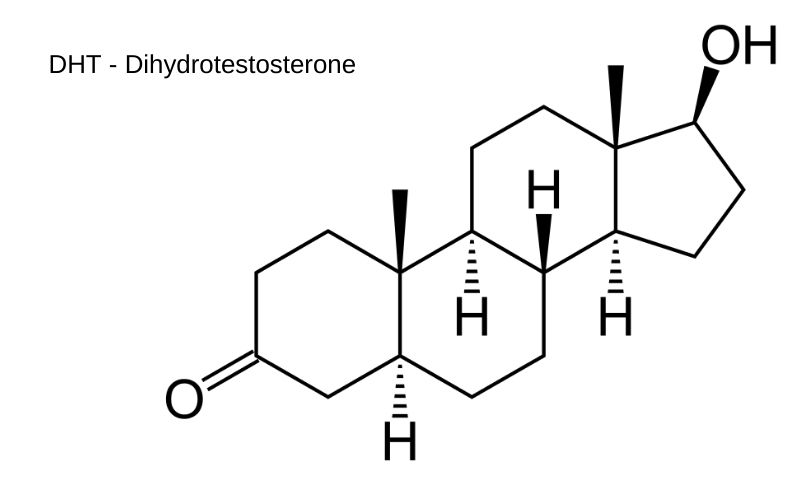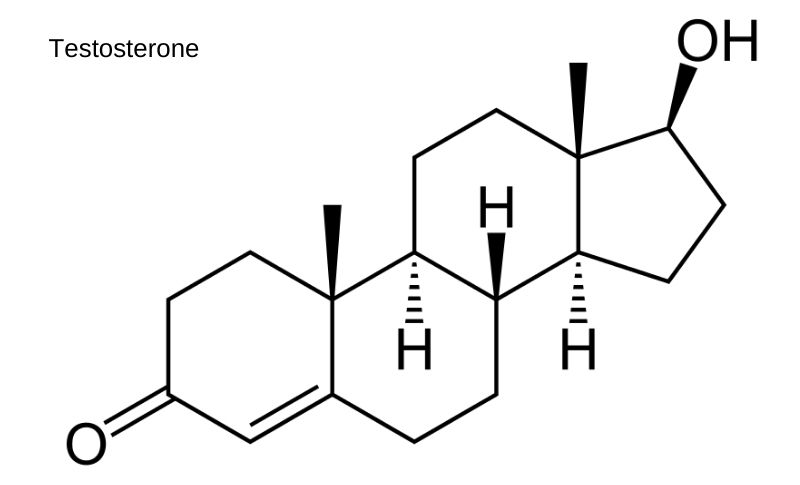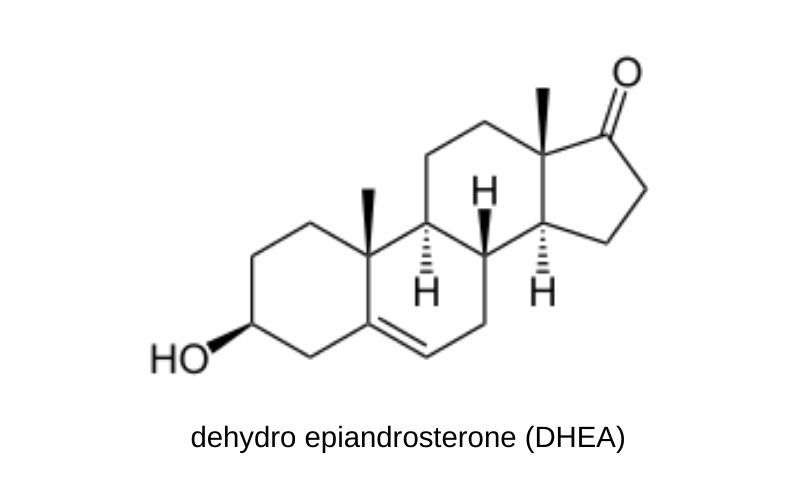Androgen hormones and androgenetic alopecia
Androgens are a family of hormones that promote the development and maintenance of male sex characteristics. Androgens are also the mediators of terminal hair growth throughout the body, i.e., with sexual maturity they cause enlargement of vellus hairs to form terminal hair in the axilla and pubis in both sexes, and on the face, chest and extremities in men. Different thresholds of androgens are necessary for the expression of certain patterns of hair growth and justify some of the differences in the secondary sex characteristics of men and women.
Table of Contents
Effects of androgens in androgenetic alopecia

The outcome of research studies in patients with androgen insensitivity syndromes and 5 alpha – reductase type-2 deficiency have implied that androgenetic alopecia is induced by activation of follicular androgen receptors by dihydrotestosterone (DHT), a potent stimulator of hair loss in the scalp. Intrafollicular androgen over-activity may be due to:
- Local factors such as increased numbers of androgen receptors or increased local production of dihydrotestosterone
- Systemic factors such as increased circulating androgens providing increased substrate for conversion to dihydrotestosterone
- Or increased systemic production of dihydrotestosterone at distant sites such as the prostate gland.

5 alpha – Reductase is the enzyme responsible for the metabolism of testosterone to DHT. Compared to testosterone, DHT binds the androgen receptor with five times the tenacity of testosterone and is more potent in its ability to cause downstream activation. There are two distinct forms of 5 alpha – Reductase, referred to as types 1 and 2, which differ in their tissue distribution. Both types are capable of producing DHT from testosterone, but they have different biochemical and pharmacologic properties.
Androgen receptors

Simply put, Androgen receptors allow the body to respond appropriately to androgens. The receptors are present in many of the body’s tissues, where they bind to androgens and become activated. All steroid hormones act by diffusing through the plasma membrane into the target cell and binding to specific intracellular receptors. The hormone-receptor complex undergoes conformational changes, exposing DNA-binding sites, and then binds to specific hormone response elements in the DNA, promoting the expression of specific hormone-regulated genes. By turning the genes on or off as necessary, the androgen receptor helps direct the development of male sexual characteristics.
The androgen receptor is believed to be responsible for determining the sensitivity of cells to androgens, and studies suggest that variations in the androgen receptor gene lead to increased activity of androgen receptors in hair follicles. The contribution of circulating and locally produced DHT to activation of hair follicle androgen receptors in balding scalp remains to be established.
Interconversion androgens

Although the level of DHT may be directly dependent on the activity of 5 alpha – Reductase, it is also obviously affected by both the supply of androgen precursors and the metabolism of DHT. Testosterone is the major precursor of DHT in men, but other weaker hormones, such as dehydro epiandrosterone (DHEA), are the major precursors of DHT in women.
Conclusion
The major advances achieved in understanding principal elements of the androgen metabolism involved in the development of androgenetic alopecia show that androgen-dependent processes are predominantly due to the binding of dihydrotestosterone to the androgen receptor. DHT-dependent cell functions depend on the availability of weak androgens, their conversion to more potent androgens catalyzed by 5 alpha – reductase, low enzymatic activity of androgen inactivating enzymes, and functionally active androgen receptors present in high numbers. The conversion of testosterone to DHT within the dermal papilla plays a major role, while androgen-regulated factors derived from dermal papilla cells are believed to influence growth of other components of the hair follicle.




